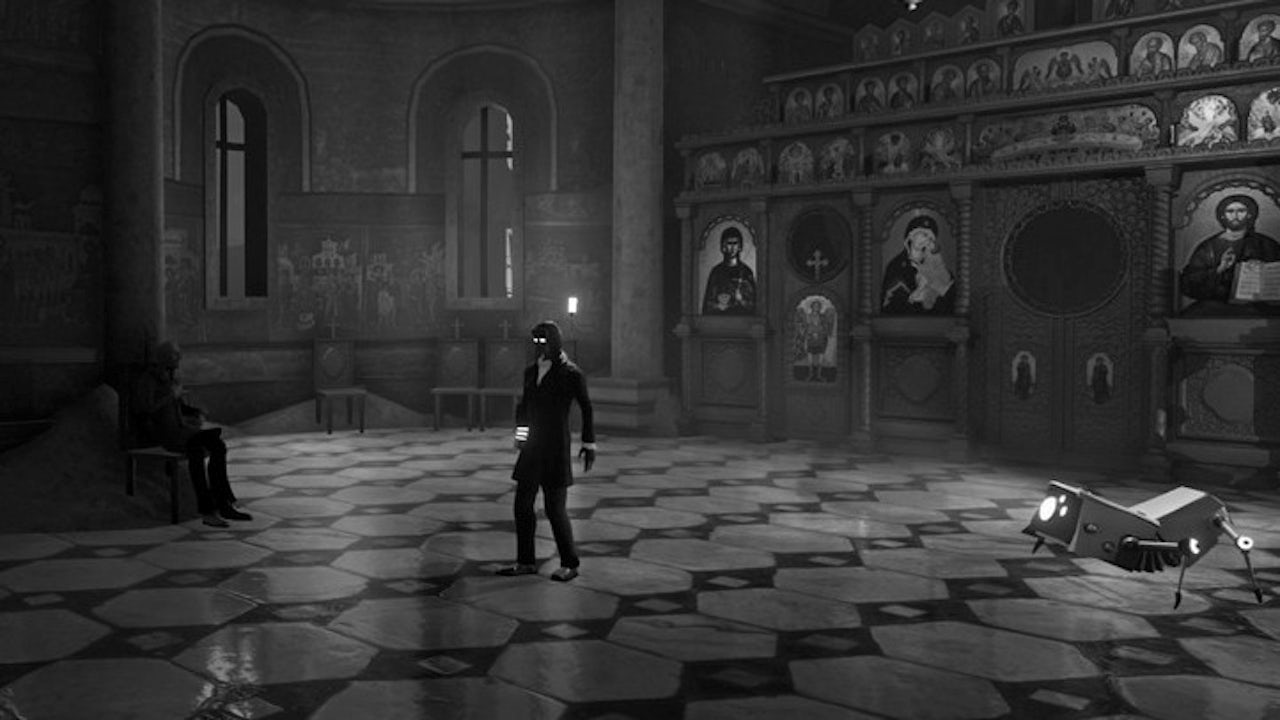There are an overwhelming number of problems with Richard Kelly’s 2007 apocalyptic thriller, Southland Tales. The movie, which built on the success of Kelly’s 2001 hit Donnie Darko, is nearly an hour too long, and its plot has too many holes to keep track of. The cast, which includes names like Dwayne “The Rock” Johnson, Justin Timberlake, and Mandy Moore, couldn’t have less on screen charisma; the special effects in the film look as bad as the visual effects employed by Donald Trump, and scenes like the one where The Rock’s character discovers a rift in space-time (rendered like MS Paint splotched onto a big-budget movie) looks more like a blooper than an actual film. But for all of the movie’s shortcomings, Southland Tales is a marvel if only for the fact that it exists at all. When it premiered at Cannes in 2006, the movie was unfinished: Most of the visual effects hadn’t been rendered, and there was still plenty of editing to be done. During the screening, critics were merciless in their displeasure. The critic Roger Ebert said of the screening that "I was dazed, confused and deafened by the boos.” And yet, it may be the movie that most closely presaged our current cultural and political moment.
Southland Tales follows an alternate history in which a 2005 nuclear attack in El Paso sends the country into World War III, greatly expands the surveillance state, and severely polarizes the electorate. After a bout of amnesia, it is revealed that Boxer Santaros, an action movie star played by Dwayne Johnson who is married to the daughter of a Republican senator, has written a screenplay that holds the keys to the coming end of the world. It’s difficult to explain much beyond that. There’s an energy source called “Fluid Karma” that is responsible for somehow slowing the earth’s rotation. A group of “Neo Marxists,” one of whom is played by Amy Poehler, try to blackmail Republicans into not supporting “Proposition 69”; Justin Timberlake plays some sort of assassin/drug dealer and does a really strange The Killers cover for no reason; Sarah Michelle Gellar plays a pornstar named Krysta Now who is working on a reality show pilot featuring pornstars discussing geopolitics.
The movie presents an exaggerated take on America’s challenges post 9/11. Political stratification, media malfeasance, and moral degradation play out in scattershot vignettes that make watching the film today, as I have several times since Trump’s election, a dream-like exercise that is as frightening as it is illuminating. But it’s Southland Tales’ incoherence, from its plot to its production, that makes the strange Bush-era allegory so fascinating. While mangled in its execution, the movie is undeniably ambitious and, when viewed in the context of today’s climate, appears to convey an anxious and frenetic universe that is set in 2008 but feels strikingly like 2017.
Southland Tales is interspersed with expository news clips and fake reality show snippets meant to depict how far down the rabbit hole the dystopian universe of the film has gone. A faux Hummer ad in the movie, for example, features two SUVs having sex in graphic detail. And while there are tendrils of good ideas all over the film — the comic inefficiency of the movie’s radical left is amusing if a bit distressing — its critique of mass media is the most coherent. Southland Tales offers a prescient glimpse of what the apocalypse might look like: a bizarre, jumbled feed of poorly thought out video clips on an all-seeing online platform that’s indistinguishable from Facebook, but contracted by the government.
On my second viewing of Southland Tales this weekend, I couldn’t help but feel like I was just staring at my phone for three hours
Kelly has said that Southland Tales was written in response to the attacks on September 11, a crystallization of his anxieties about the War on Terror and the growing prevalence of reality television. It would be easy to write the off film as liberal post-9/11 alarmism if so much didn’t ring true. On my second viewing of Southland Tales this weekend, I couldn’t help but feel like I was just staring at my phone for three hours. The movie exists like a visual tapestry of hastily thought ideas, a familiar sentiment if you’ve ever peeked at what Facebook is peddling on its new video platform.
Just last week, the company, whose obscene scope has drawn concerns about who it is accountable to, unveiled its Spaces app, which allows users with VR headsets to place cartoon avatars of themselves in various locations in the real world. To demonstrate the new tool, Facebook CEO Mark Zuckerberg took a tour of the devastation in Puerto Rico.
“Now we’re in a 360 video in Puerto Rico, and you can kind of get a sense of what is... we’re on a bridge here, it’s flooded,” Zuckerberg said. “You can get a sense of some of the damage here that the hurricanes have done, and one of the things that’s really magical about virtual reality is you can get the feeling that you’re really in a place.” Moments later, Zuckerberg’s avatar gives a high five to Facebook staffer Rachel Franklin’s avatar in front of a flooded street. The scene could have easily been taken out of Southland Tales.
Kelly’s overwrought, frustrating film is strangely one of the most prophetic of its time. No one could have predicted the strange world we’ve found ourselves living in today, which might explain the incredulity of most of Southland Tales’ critics following its release. But maybe that’s the point. This is how the world ends. Not with a whimper, but with a pivot to video.

